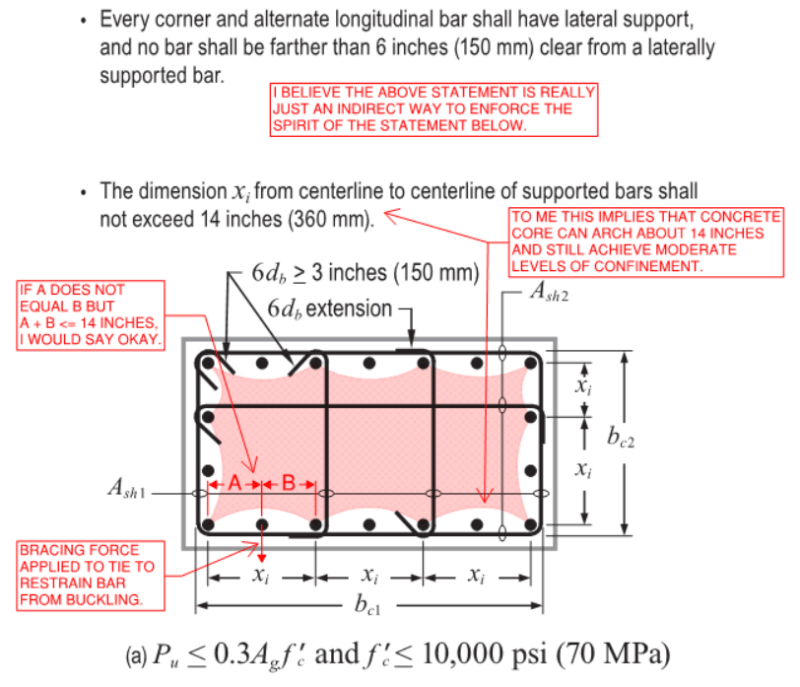said the noob
Structural
- Oct 1, 2018
- 25
Quesetion: if column vertical bars has clear distance between bars at 175mm between one tied bar and non-tied bar exceeding code, what would be the cause of concern here? is the bar going to buckle once we are >150mm? we had noticed this one a site visit
code states: ties shall be arranged so that every corner and alternate longitudinal bar shall have lateral support provided by the corner of a tie having an included angle of not more than 135 degrees, and no bar shall be farther than 150mm clear on either side from such a laterally supported bar.
code states: ties shall be arranged so that every corner and alternate longitudinal bar shall have lateral support provided by the corner of a tie having an included angle of not more than 135 degrees, and no bar shall be farther than 150mm clear on either side from such a laterally supported bar.

